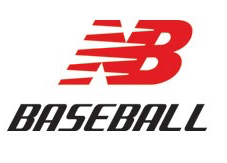EDITOR'S NOTE: The following rankings and evaluations by FSS PLUS are based on subjective analysis and industry sources, and do not influence, are not influenced by or are affiliated with the opinions and reports of Future Stars Series scouting and development staff.
Welcome to the first refresh of the 2025 MLB Draft cycle. We're well underway.
The 2025 Draft is four months away so it's time for the Future Stars Series PLUS Top 300 prospect board update. This board is built on three pillars. Live looks, data evaluation, and intel/conversations provided from within the industry. These players have a ton of time and projection ahead of them, so expect this list to change considerably as we approach the 2025 Draft.
NEW to this edition are Calculated OFPs and Carrying Tools for each player. The Overall Future Projection (OFP) outcomes on this board are calculated with an OFP Calculator built for Over-Slot subscribers. It weighs each tool appropriately (and differently) depending on the position of the player being evaluated.
Using a combination of Dave Cameron's research and Fangraphs contributor Ben Clemens' future outcome projections as an imperfect reference, the odds of a player meeting his OFP projection is roughly 25 percent with the likelihood increasing as the OFP increases.
The odds of a player outperforming their projected OFP also increases as the OFP increases. As is to be expected, players with an OFP less than 48 are particularly more likely to struggle to establish a Major League role.

As of March 10, this class is muddy. Really muddy. Depending on the metric you value or the scout you speak to there are no less than 30 different players with an argument to be featured in the top 10.
College bats simply aren't impressive. The ones that are hitting aren't putting up impressive batted-ball metrics. Each hitter seems to have a significant wart worth examining. Old-school scouting and projection-based modeling will be key this July.
Jamie Arnold is a metric freak. His ability to create velocity and angles from a 55-inch release height is reasonably unprecedented. Arnold has an extremely, outlier-esque flat approach angle with a fastball that absolutely feasts at the top of the zone. He's been up to 97 but more impressively holds 92-95 into the deepest innings of his starts.
It's very comfortably a plus fastball and you might find more scouts that slap a 70 grade on the pitch than you do the latter. Arnold can feast on lower-level opposition with one pitch and that alone is extraordinary.
As Arnold has matured into his craft, gotten stronger and has continued to better understand how his body works, his athleticism has continued to tick higher and higher. He's added nearly six inches of extension down the bump over the course of the last twelve months and it's allowing his entire arsenal to play even better than before. He's now generates well-above-average extension compared to his Major League counterparts.
The fastball is really just the start of a complete arsenal. Arnold's sweeper is just as impressive featuring considerable depth and big lateral action to get left-handed hitters looking foolish on the regular. He'll back-foot the breaking ball to right-handed hitters too. He commands the pitch well and his misses are competitive.
Arnold went to Driveline prior to the 2025 season to work on his pitch shapes, particularly his changeup. What was once inconsistent in terms of execution and consistency is now flashing way more impact potential. Arnold generates more depth and more fading action than ever before.
While it's still largely average in terms of command, landing that pitch anywhere in or near that zone makes for an offspeed pitch that'll consistently flash plus.
Arnold is a strike thrower with a simple delivery, a loose arm, and athleticism in his operation. He could eventually end up throwing even harder than he is today. He's precisely what a top-of-the-rotation starter looks like. Scouts are looking for *different* when it comes to pitching prospects. Arnold is very different and will undoubtedly garner Chris Sale comparisons as the Draft approaches.












